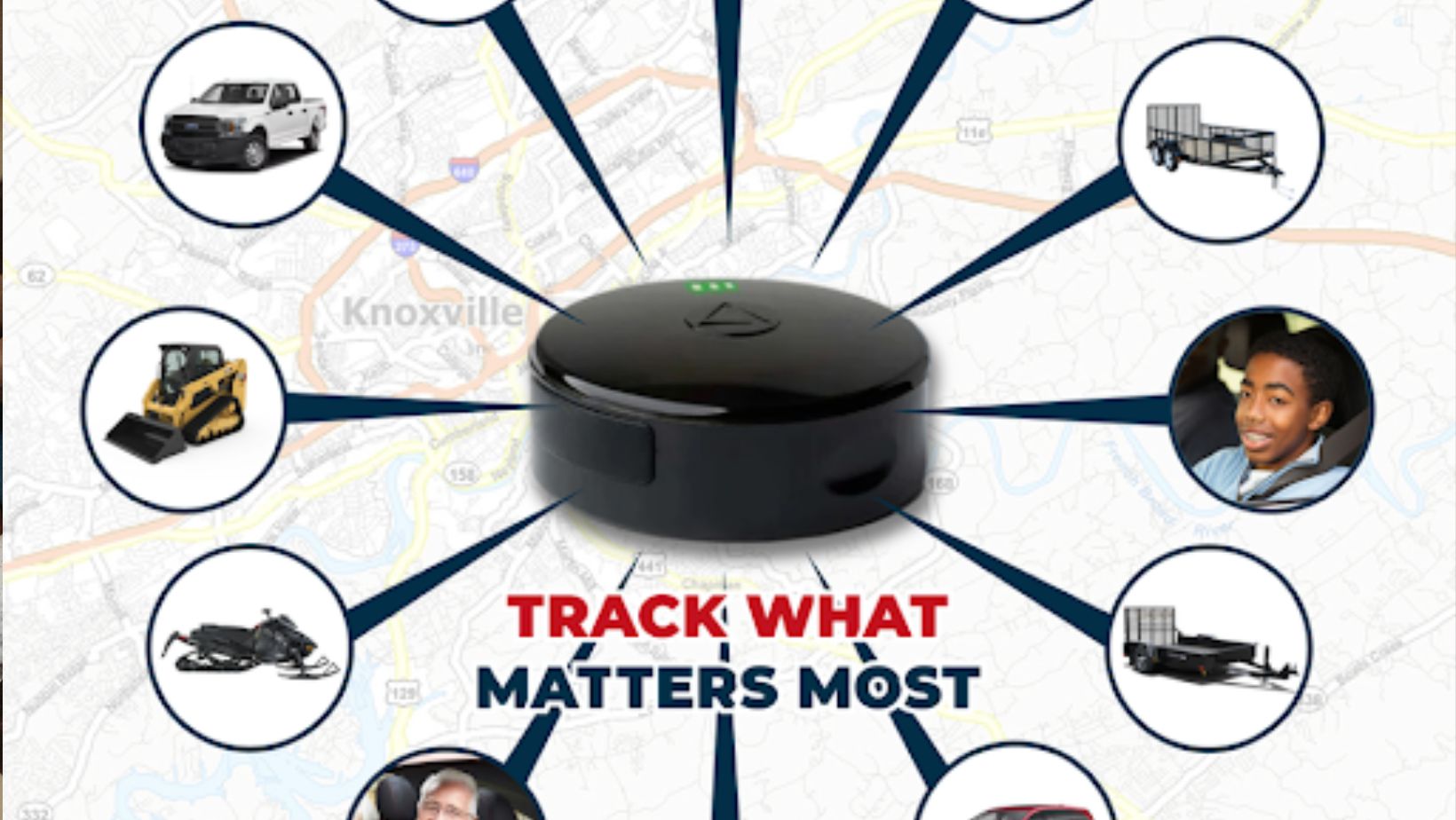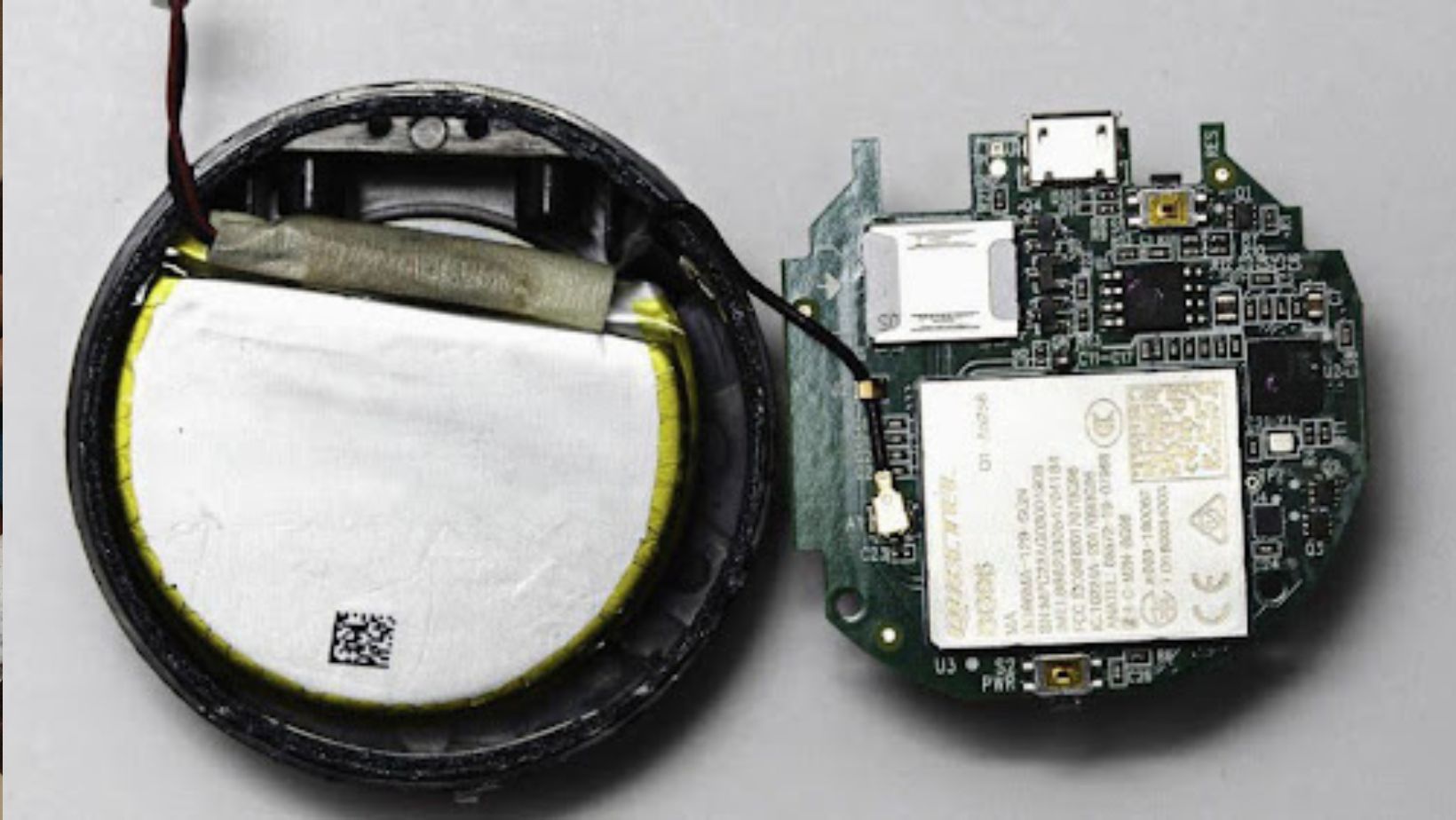Ever wonder what secrets hide inside a real-time GPS tracker?
Today, we crack open the SpaceHawk GPS and expose what makes it tick. We’re not just popping the lid for fun. You’re about to see the hidden tech that powers real-time location tracking — and how companies engineer rugged, battery-powered devices for the growing IoT world.
Inside this detailed product review and engineering breakdown you’ll uncover:
- How a waterproof design keeps critical tech safe
- Why a powerful magnet transforms simple installation
- The smart build behind 4G LTE and GPS working together (without draining the battery)
This isn’t just another teardown.
You’ll walk away knowing exactly what choices SpaceHawk GPS engineers make to balance size, power, durability, and wireless performance — all while passing strict FCC certifications.
By the end, you’ll have a blueprint of what it takes to create a stealthy, durable, high-performing wireless tracker… and why every part inside matters.
 What Is The SpaceHawk GPS Tracking Device
What Is The SpaceHawk GPS Tracking Device
SpaceHawk is a hidden GPS tracker that is used for monitoring various assets such as vehicles, trailers, and construction equipment. With its unique design features that include a powerful magnetic mount, waterproof housing, and super-fast real time location updates, SpaceHawk is commonly used among businesses, private investigators, and police. In fact, many surveillance companies such as Tracking System Direct even call it, “The best GPS car tracker on the market today”.
| Feature | Details | Benefits | Additional Info |
| Real-Time Tracking | 3-second updates | Instant Alerts | Precise Location |
| Magnetic Mount | Easy Attachment | Secure Placement | No Tools Needed |
| Waterproof Design | Rugged Construction | Durable | Outdoor Use |
| Long Battery Life | Extended Use | Less Recharging | Convenient |
Use Cases and Tracking Solutions
The SpaceHawk GPS Tracker offers a wide range of tracking solutions designed to meet different needs. Whether you’re tracking vehicles, protecting assets, ensuring personal safety, or managing business operations, the device delivers reliable, real-time location data.
Vehicle and Asset Tracking
The SpaceHawk GPS is a strong choice for tracking cars, trucks, or valuable cargo. It’s commonly used by individuals and businesses alike to monitor movements and improve operational efficiency.
Key features for vehicle and asset tracking:
- Real-time updates: Receive live location data instantly.
- Long battery life: Track for extended periods with fewer recharges.
- Durable design: Magnetic and waterproof for use in all conditions.
These features make it easier to track vehicles and protect important assets, no matter the environment.
Personal GPS Tracking
For personal use, the SpaceHawk GPS provides added security and peace of mind. Parents can monitor children’s locations, and individuals can share real-time updates in case of emergencies. In our opinion, this type of wireless GPS tracking system is probably best for monitoring teenage drivers. And yes, even family bloggers such as Sparkles & Stretchmarks agree.
Personal tracking highlights:
- Compact size: Small enough to fit into a bag, backpack, or pocket.
- Discreet use: Can be hidden if covert tracking is necessary.
- Global coverage: Operates across networks worldwide for better safety.
SpaceHawk is a pretty incredible mini GPS, but it certainly wasn’t created for tracking pets, luggage, or kids. In those circumstances, we would probably encourage you to learn more about AirTags or bluetooth trackers without subscription fees.
GPS Fleet Management
Businesses benefit from using the SpaceHawk GPS to manage fleets and safeguard equipment. The tracker device helps streamline operations while offering better protection for company assets.
Business advantages include:
- Cost efficiency: Optimize driving routes and reduce fuel expenses.
- Improved accountability: Monitor vehicle use and employee activity.
- Asset security: Track and protect valuable tools, trailers, and equipment.
By offering a mix of powerful features and easy deployment, the SpaceHawk GPS is a solid option for businesses who want to secretly track vehicles or monitor assets. However, if you are seeking a more robust fleet management solution that meets ELD mandate, you might want to consider a dash camera.
 SpaceHawk GPS – What’s Inside the Box
SpaceHawk GPS – What’s Inside the Box
Opening the SpaceHawk GPS package reveals a thoughtfully curated setup. Inside, you’ll find four items: the tracker itself, a micro-USB charging cable, an extra rubber cover for the charging port, and a small metal tool for pressing the discreet pinhole on/off button—a practical touch that shows real attention to detail.
The SpaceHawk’s exterior keeps things simple and sleek. It has a minimal logo stamped on the top, a small sticker indicating the location of the on/off button and charging port, and a larger sticker on the bottom showing the serial number and technical specifications. The overall look is clean and functional, without unnecessary design clutter.
External Design and Build Quality
One standout aspect of the SpaceHawk is its sealed, rugged construction. There’s a removable rubber cover protecting the charging port, but no external screws or loose parts—making it clear that this device is built for durability. Compared to plug-and-play OBD2 GPS trackers, which are limited to vehicle use, SpaceHawk’s versatile, portable design lets you track assets, vehicles, or anything else without being restricted to a car’s interior.
The tracker’s streamlined body also means it’s less detectable than Bluetooth-reliant devices like Apple AirTags. Because it operates through satellite-based GPS and not local Bluetooth signals, it stays hidden and secure, providing a true layer of discretion.
 A Closer Look Inside the SpaceHawk GPS Tracker
A Closer Look Inside the SpaceHawk GPS Tracker
Opening the SpaceHawk reveals a thoughtfully organized internal structure, centered around both functionality and security. The top side of the printed circuit board (PCB) houses a GPS antenna—similar in appearance to standalone antennas you might find from Sparkfun or other suppliers. The SpaceHawk real time GPS has a simple design at first glance, but the true intelligence lies underneath.
Also visible are a series of test points and GPIO breakouts. These features help during production and diagnostics, offering access to critical system signals without needing fine probes or disassembly. An array of labeled LEDs is tucked neatly under the translucent enclosure, with indicators for CHG (charging), CELL (cellular connection), and GPS (satellite lock). These LEDs provide visual feedback about device status during operation without compromising the unit’s low-profile design.
Nearby, a power cable, a USB port (mounted on the PCB’s reverse), a diode, and a capacitor are found. The arrangement is simple yet efficient. Of note are the unpopulated solder pads on the left side of the GPS antenna—an intentional design move.
Shared Board Design
Rather than designing multiple PCBs for different models, SpaceHawk’s engineers created a flexible board that can be selectively populated. This approach:
- Lowers production costs
- Simplifies inventory management
- Speeds up testing and quality assurance
- Reduces the risk of design errors across product lines
For a company producing high-volume GPS trackers, this level of manufacturing efficiency is a major advantage.
The top side’s simplicity also serves a security purpose. Since the enclosure’s upper half is translucent, keeping sensitive circuits on the bottom prevents tampering and protects intellectual property.
Under the Hood: Battery and Magnet
Removing the PCB, which is held in place only by press-fit (no screws or locks), reveals two additional key components inside the SpaceHawk:
- A 1500mAh lithium-ion battery, connected via the two-pin cable observed earlier
- A strong adhesive magnet, attached to the underside of the battery
These two components, along with the PCB itself, are the only contents inside the enclosure. The minimalistic approach enhances durability by reducing points of failure—an important consideration for any real-world GPS tracking device.
 Exploring the Core Electronics
Exploring the Core Electronics
Flipping the PCB reveals a much more complex and information-rich design. Dominating the bottom side is the Quectel BG96 System-on-Module (SoM).
A Single Module for Satellite and Cellular Tracking
The BG96 is not just a cellular modem; it combines LTE Cat-M1/NB1 connectivity with GNSS capabilities. It supports multiple satellite constellations including:
- GPS
- GLONASS
- BeiDou/Compass
- Galileo
- QZSS
This multi-network support ensures more accurate, faster location fixes even in difficult environments, giving SpaceHawk a substantial advantage over basic Bluetooth tracking devices like AirTags, which rely heavily on nearby iPhones to locate.
Directly above the BG96, the A1 antenna clip connects to a custom-built LTE antenna inside the enclosure body. This integration helps maintain a compact profile without sacrificing signal strength, although it does create additional RF certification hurdles during product development.
To the right of the BG96 is the SIM card slot, necessary for the device’s cellular communication abilities. The SpaceHawk is capable of real-time tracking, thanks to this integrated LTE modem—another key distinction from trackers that lack a direct cellular connection.
Other Key Components
Besides the BG96, there are two other prominent integrated circuits (ICs) on the board:
- AT25FF081A NOR Flash Chip (by Adesto Technologies):
Provides 8Mb of reliable non-volatile storage for system data, firmware, or event logs. NOR memory is chosen here for its durability and robustness over NAND, prioritizing long-term data retention over cost or storage density.
- Dialog Semiconductor DA14695 Microcontroller:
A Bluetooth 5.1 capable SoC, but more importantly, it brings an integrated power management unit to the design. Features include:
- Buck converter for voltage regulation
- Lithium-ion battery charger
- Brownout detection
- Wake-up-capable sleep mode supplies
- Real-time clock and cryptographic engine
Interestingly, even though the DA14695 supports BLE (Bluetooth Low Energy), that functionality is probably underused or unused in SpaceHawk. Instead, the choice to include it likely stemmed from the need for compact and integrated power management, critical for maintaining long battery life without bulky external circuits.
Smart Engineering Choices
There are a few noteworthy design decisions SpaceHawk’s creators made that balance cost, functionality, and manufacturability:
- Combining GPS and LTE into a single SoM (BG96) keeps RF complexity low and simplifies certifications.
- Choosing a microcontroller with built-in PMU reduces external components, board complexity and cost.
- Using NOR flash ensures data reliability, which is critical for tracking devices operating in the field.
- Designing a multi-use PCB streamlines production, allowing different models or regional variants without needing a separate design.
While the DA14695 microcontroller might seem overbuilt for this device—since its BLE capability is likely unused—the gain in integrated power management features arguably outweighs any slight inefficiency in silicon cost or board space.
Final Thoughts on the SpaceHawk Design
At first glance, this Amazon best selling GPS tracker might seem simple. But the SpaceHawk real time GPS shows how thoughtful engineering, smart part selection, and manufacturing foresight come together to create a durable, efficient, and discreet tracking device. Yes, this thing is an absolute powerhouse!
With strong GNSS performance, reliable LTE connectivity, efficient battery management, and a streamlined internal structure, SpaceHawk distinguishes itself from plug-and-play OBD trackers or crowd-sourced Bluetooth trackers. Its design choices not only improve real-world performance but also enable it to operate with a degree of stealth and independence that few consumer-grade devices can match.
FAQs
What Materials Are Used To Manufacture A GPS Tracker?
GPS trackers are typically made using printed circuit boards (PCBs), lithium-ion batteries, durable plastics, and metal parts. Materials are chosen based on strength, weather resistance, and the ability to protect sensitive electronic components.
Is SpaceHawk A Good GPS Tracker?
After a complete breakdown that let us investigate the parts, functionality and overall performance of the SpaceHawk GPS, we can confidently say yes. Yes, the SpaceHawk mini GPS tracker is a good product built with quality parts, and that performs better than many similar items.
How Do Manufacturers Ensure GPS Trackers Are Accurate?
Manufacturers ensure accuracy by using high-quality GPS chipsets and calibrating the devices during production. They also perform field testing under various conditions to optimize signal strength, satellite connectivity, and real-time tracking performance.
What Software Is Needed To Run A GPS Tracking Device?
According to the specialists at Fleet1st, GPS tracking device need embedded firmware to process satellite data and a mobile or web-based GPS tracking app for users. Manufacturers either develop proprietary platforms or integrate with third-party systems to manage location data, alerts, and device settings.

